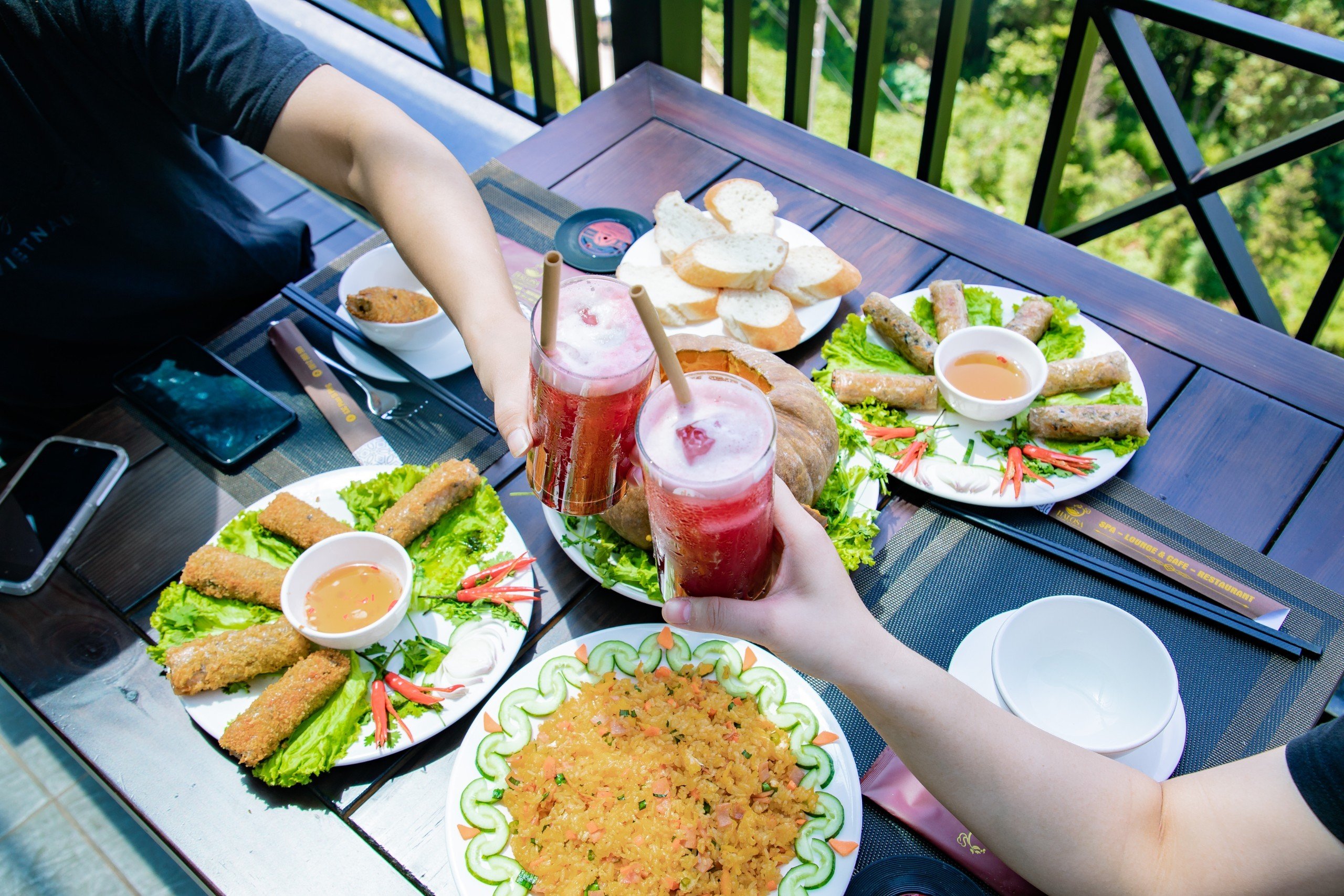Understanding more about ethnic minorities in Sapa
Date17-04-2023Tourists coming to Sapa are not only attracted by the majestic and dreamy natural beauty but also appreciate the cultural values and beauty that come from the people living in this Northwestern mountainous region, which are the ethnic minorities in Sapa.
The H’mong people in Sapa:
The H’mong people are the largest ethnic group in Sapa at present (making up 50% of the population in Sapa), so you can often encounter H’mong people when traveling to Sapa. The Hmong people’s costumes are easy to recognize: Men often wear black or dark blue pants, short-sleeved winged shirts like jackets, and long shirts that go past their hips. H’mong men often wear round non-conical hats that hug their heads, with black or dark-colored embroidery. H’mong women also often wear black clothes, wear black scarves, wear sleeveless jackets, and long shirts that go down to their knees

The way of making traditional clothing for Hmong women is quite unique, the fabric is rolled and pressed with beeswax, giving the shirt a silver shine. Hmong women do not wear skirts but rather wear short pants that reach the knee and wrap their legs with narrow cloth bands.
The Hmong people living in Sapa mainly rely on agriculture and handicraft production. The Hmong people’s crops include corn, rice, potatoes, three-cornered oats, taro, sesame, and various vegetables, as well as medicinal herbs and famous fruits in Sapa such as apples, peaches, and plums…
The Red Dao ethnic group in Sapa:
Is the second largest after the Hmong. The largest concentration of Red Dao people in Sapa is in Ta Phin village, which still preserves the beautiful cultural traditions and customs of the Red Dao people, attracting many tourists to come and visit.
You can easily recognize the Red Dao people living in Sapa through their clothing. They often wear traditional outfits with vibrant colors. Men usually tie their hair behind their necks and wear short shirts in indigo or black. The clothing of Red Dao women is very colorful with five dominant colors, of which red is the main color. The women’s hair is long and wrapped around their heads with a characteristic red triangular scarf.

The Tay people:
Behind the Hmong and Dao Do ethnic groups in terms of the population living in Sapa. The Tay people are the third largest minority group in this Northwestern region. The Tay people are one of the ethnic groups that formed very early in Vietnam. The Tay people use the Tay Thai language. The Tay people usually concentrate mainly in the southern communes of Sapa: Ban Ho, Nam Sai, and Thanh Phu. And it is usually in the valleys with many lush rivers and streams in Sapa.
The traditional costumes of the Tay people are easy to recognize due to their simple design. Tay men and women wear a four-piece slit chest shirt in dark gray or black, with a round collar and two pockets on the front hem, with a wide fabric belt wrapped around the waist adorned with many sequins.

The Xa Pho
An ethnic group may sound unfamiliar to most Vietnamese people. They belong to the Phu La ethnic group, which is a very small group with few people. Throughout Vietnam, there are only about 4,000 people belonging to this ethnic group.
Sapa also does not have many Xa Pho people living there. The Xa Pho people usually reside in villages in the Nam Sai commune. Located in the southern part of the Sapa district. This is a remote area with difficult roads and limited contact with other populated areas in Sapa
Visit Halosa at:
- Fanpage: https://www.facebook.com/halosasapa/
- Instagram: https://instagram.com/halosavn
- Hotline: 091286 9989











